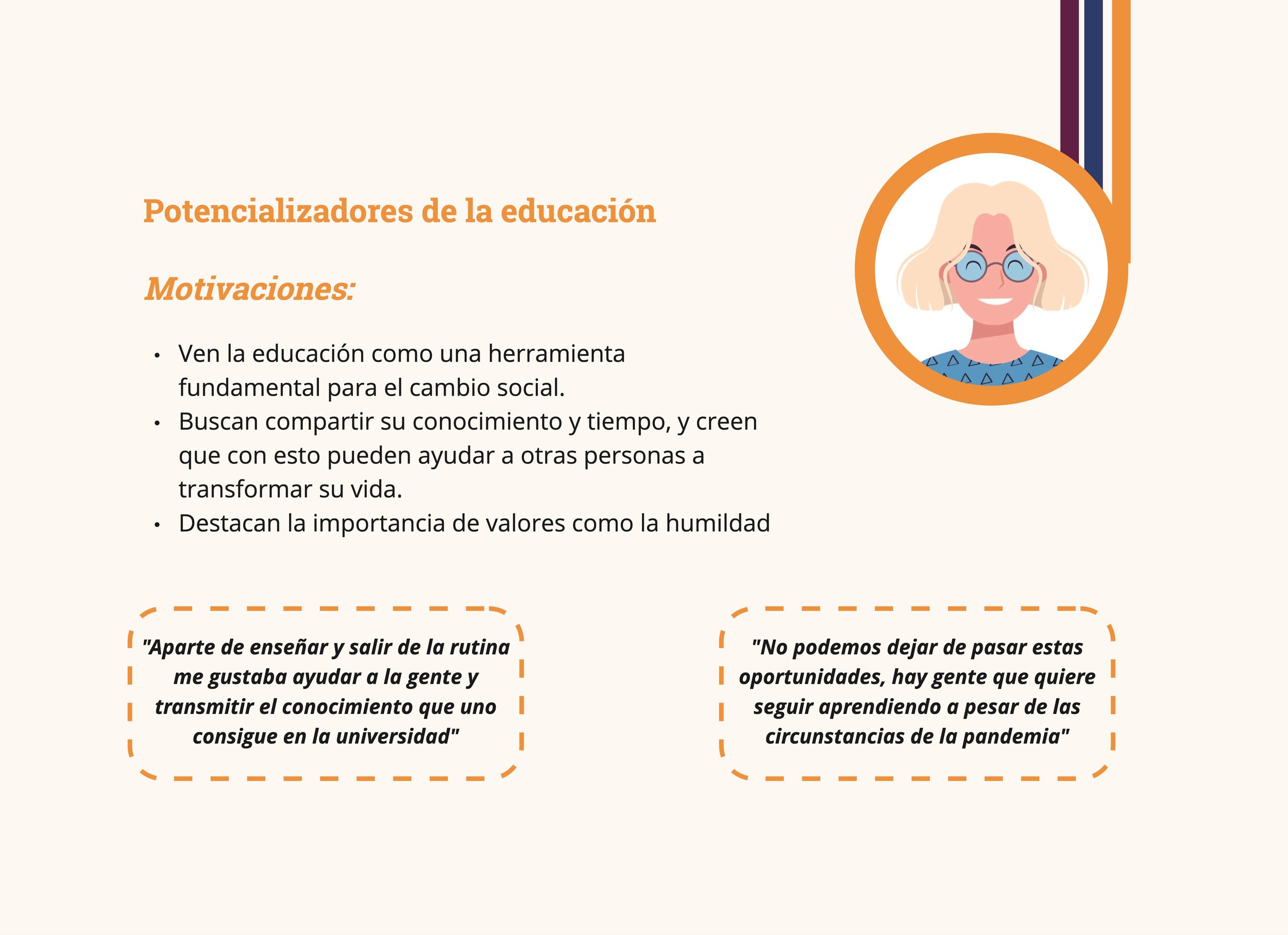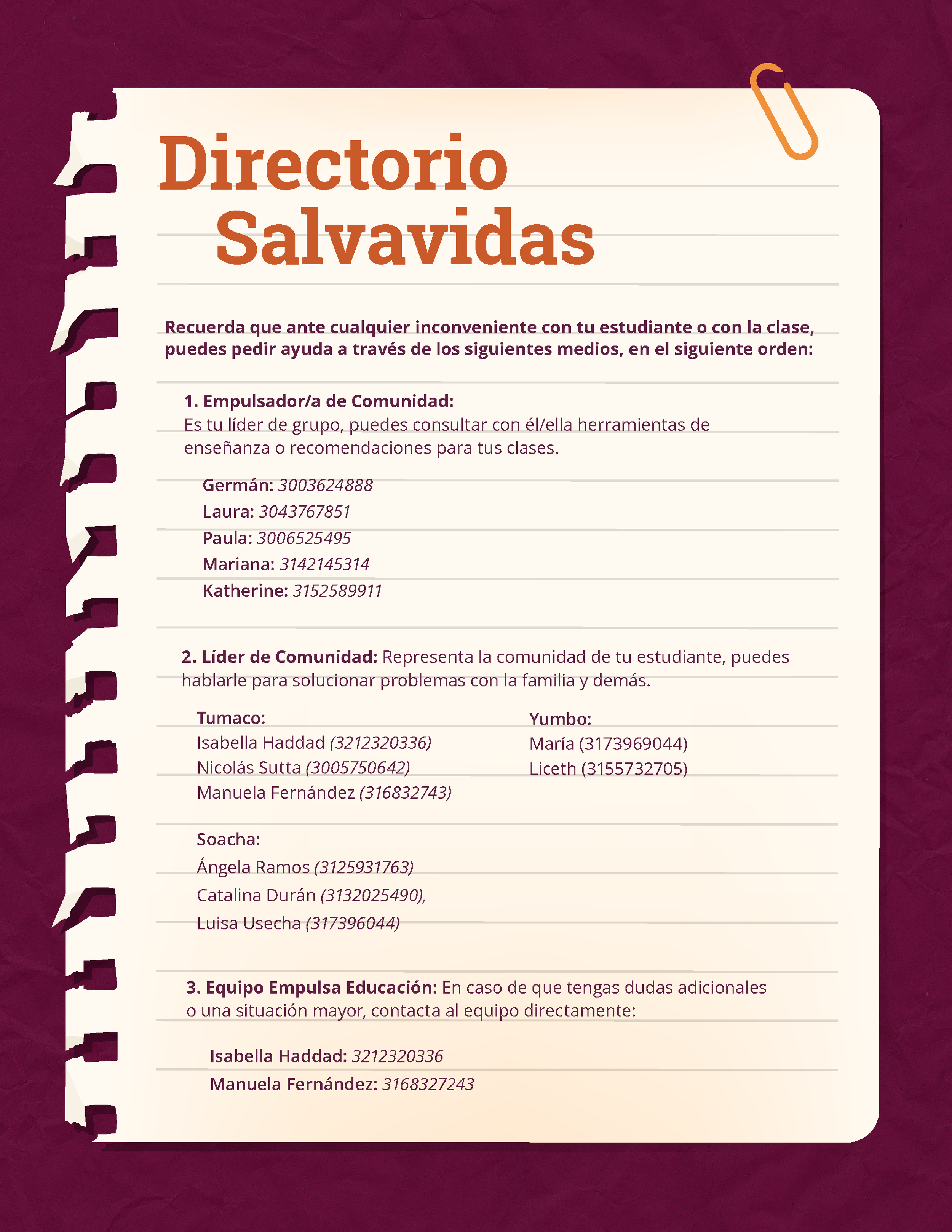
Empulsa
Empulsa is an NGO created as a solution to the increasing illiteracy of children in remote areas of Colombia during the pandemic. The company reached out for a consultation due to the decreasing amount of volunteers in the experience and the difficulties of continuing the tutoring sessions with students. The design proposal involved the intervention of various contact points to seamlessly deliver the experience.
Client
EMPULSA
Team: J. Marin, I. Pimienta, M. Chaparro, J. Loaiza , J. Aldana.
Tools
Illustrator · Photoshop · Miro · Figma
Timeline
August - December 2021
My Role
Strategist · Researcher · Service Designer
Context
Education illiteracy and dissertation are one of the biggest problems in Colombia, usually caused by the opportunity breach and lack of accessibility for a major number of the population, particularly in rural areas. Additionally, due to the pandemic, this problem has increased since in-person classes were suspended to prevent the spread of COVID-19. Considering that most kids don’t have an adult that could homeschool them - most parents are either illiterate or income providers- Empulsa Educación was created by Empulsa Foundation to support these children in continuing their education.
Brief: “A Tinder for Education”
The foundation’s team brings the brief summarized in these words. They are looking for the best system to match volunteers and students, as well as attract more volunteers to the organization. Currently, Empulsa works with communities in the departments of Tumaco, Soacha, Llanos Orientales, Chocó, and Meta. They have the mission of incrementing the motivation to study, giving meaning to education, and breaking social barriers.
Empathize:
Research
Considering the brief’s priorities, our initial goal was to understand the knowledge, motivations, and collective work involved in the service offered by Empulsa Educación that could potentially inform an effective volunteer-student match.
Stakeholder Diagram
We started the research stage by analyzing the contexts and stakeholders of the organization. This exploration led us to understand that the role of Empulsa is bridging the beneficiaries (students), volunteers, foundations, and community leaders by providing the fundamental contact points in the service. Empulsa’s service brings the benefits of education to vulnerable communities.
Ethnographic Research
Once we identified the actors involved in the experience, we started researching to locate the pain points for volunteers, students - parents, and foundations. Given that Empulsa didn’t have any user research, we started by making a series of semi-structured interviews and rapid ethnography observations. We applied the research tools to 8 volunteers, 6 students, 2 community leaders, and 5 parents. The results of the investigation are compiled in the insights, service blueprint, and persona profiles:
Persona Profiles
In the research, we found a pattern: volunteers change their motivations and interests as their participation extends in the program. To condense the results, we created a profile trajectory diagram that chronologically organizes the migration of motivations.
We found four profiles that involve the overall motivations for volunteers:

Education Potencializers see education as a fundamental tool for social change. They take the volunteering experience as an opportunity to empower communities.

Ability Hunters take advantage of the volunteering experience to practice skills and as a tool of self growth

Service Spirits bring selfless support and energize from dedicating time to the volunteering experience. They could be busy working or studying but will make the time off hours to give back.

Contexts Analysts are more rationally driven, using their privilege to contribute to others. They consider it fair to volunteer given the great advantages they've had in education accessibility
Customer Journey
Following up, we deconstructed the interview findings to diagram the customer journey for three main actors: volunteers, students, and guardians.
The volunteers’ experiences have some key moments like the training, the match, breaking the ice, class prep, and evaluation.



Define:
Insights
From the conducted research, we defined four macro insights that compile the recognized key patterns :

First Date: the ultimate test

The one who perseveres reaches

A winning strategy

Learning by teaching
Opportunity Map
Knowing the stages of the experience, we identified six areas of opportunity, located in the following opportunity map in orange circles. The opportunities for each insight are summarized below:
1. First Date: the ultimate test
We recognized the opportunity to add information about the students’ and volunteers’ personal interests for the match. Also, we identified the opportunity to provide resources and tools to ensure that the dynamic of the first meeting is completed successfully, increasing the trust and familiarity of tutors and students.
3. A winning strategy
As determined, it’s essential to recognize the student’s smaller milestones (such as monthly goal achievements and quizzes) to incentivize them to continue.
2. The one who perseveres reaches
We found an overlooked value in collectively recognizing the volunteers’ efforts to share teaching strategies, as well as highlighting teaching as a self-improvement opportunity.
4. Learning by teaching
There’s a great opportunity in emphasizing the skill-boosting experience for current volunteers. This is a benefit that is not being communicated.
Value Proposals
Priority Matrix
From the opportunities found, we defined a series of value proposals that were presented to Empulsa’s team along with the corresponding functional requirements.
Given that we had limited time to explore the improvements to the experience, we decided to organize a co-creative workshop with Empulsa’s founders to prioritize the value proposals according to their impact and difficulty of implementation. This tool was fundamental to landing on the final proposal, which consists of iterating the essential contact points of the experience.
Proposal
Redesigned Contact Points
The chosen contact points to intervene were the following:
Informational meeting form on Empulsa’s website
Informational meeting follow-up email
Volunteer Registration form on Empulsa’s website
Who am I? - Letter (resource for the first meeting student-volunteer)
First meeting prep kit - A short guide including helpful resources and a checklist for the volunteers’ first tutoring session
Final Prototypes & Implementation
The various contact points were iterated with the volunteers, guardians, and students, allowing for the required modifications. The prototype results - as shown below- were effectively implemented by Empulsa in the experience since 2021.
Service Walkthrough


















